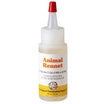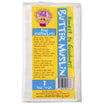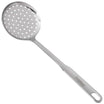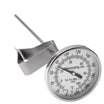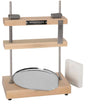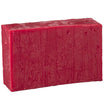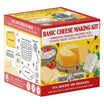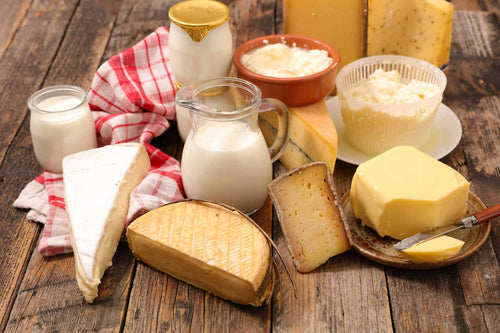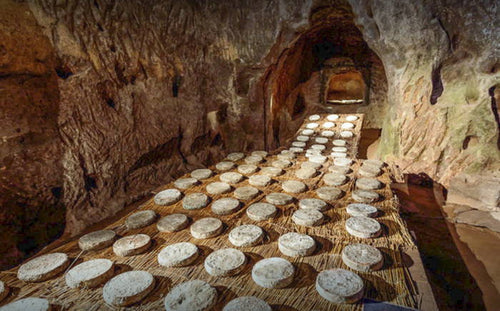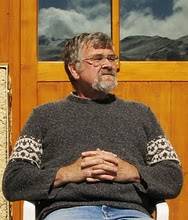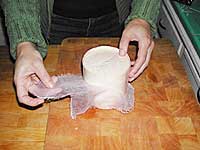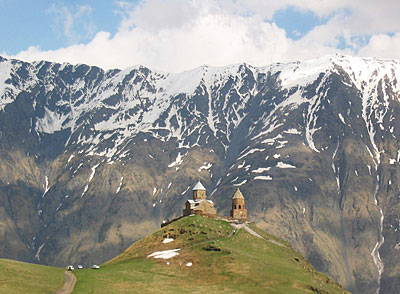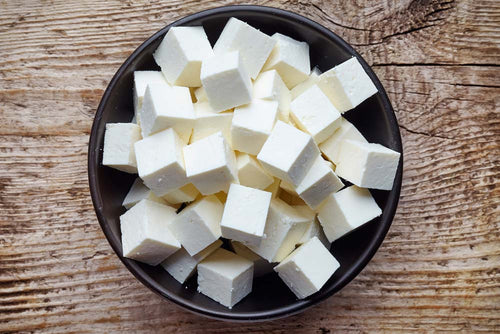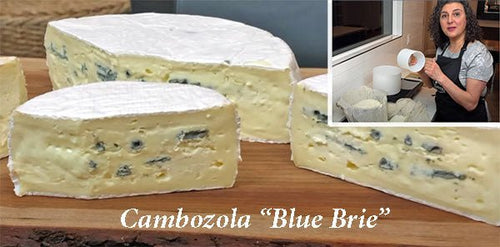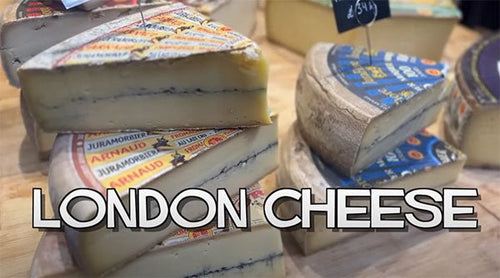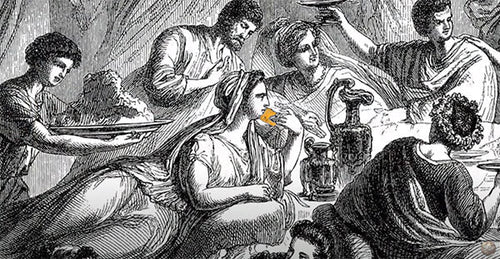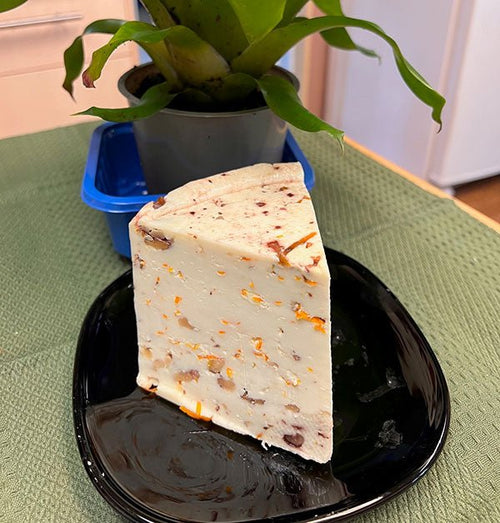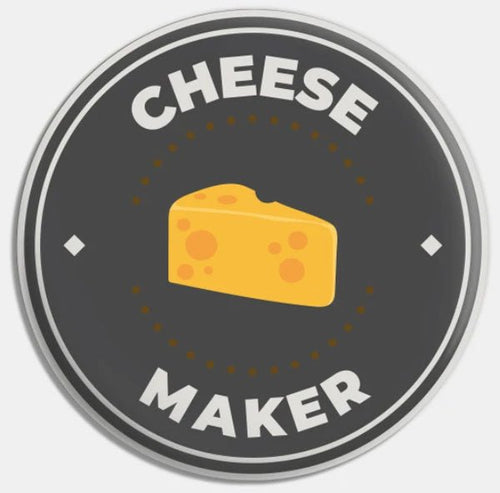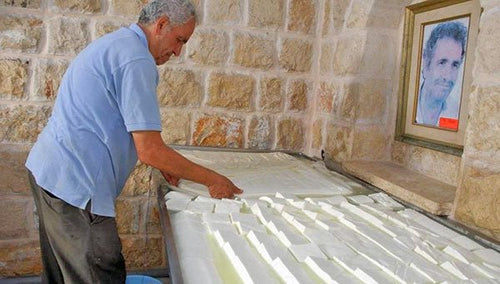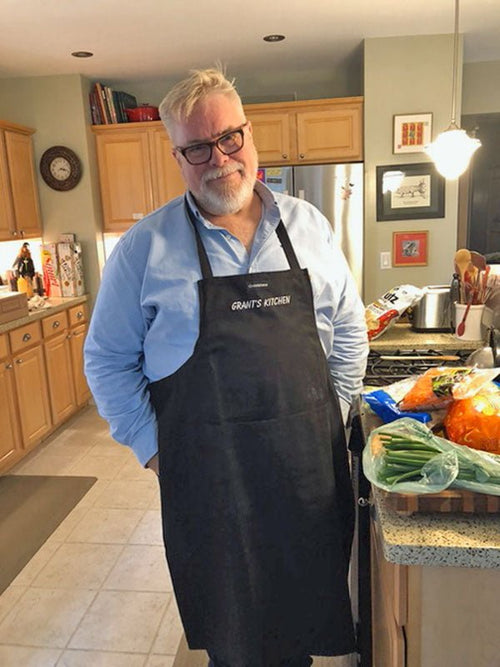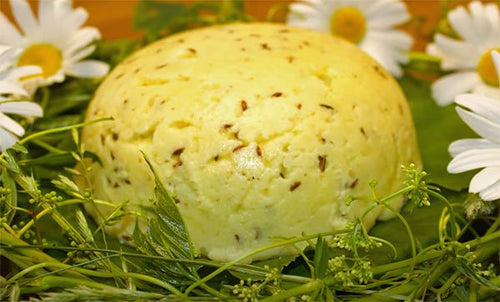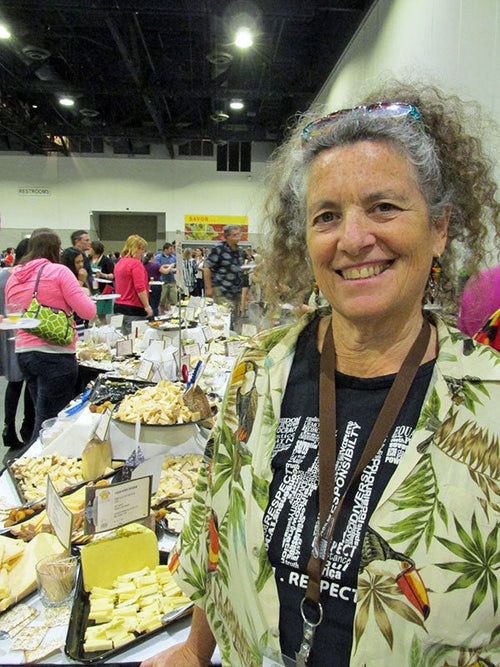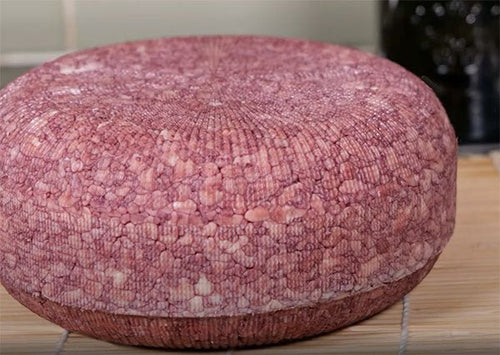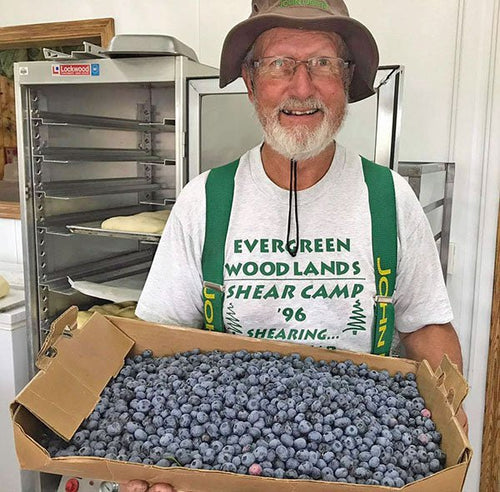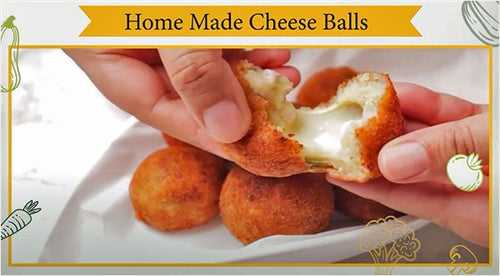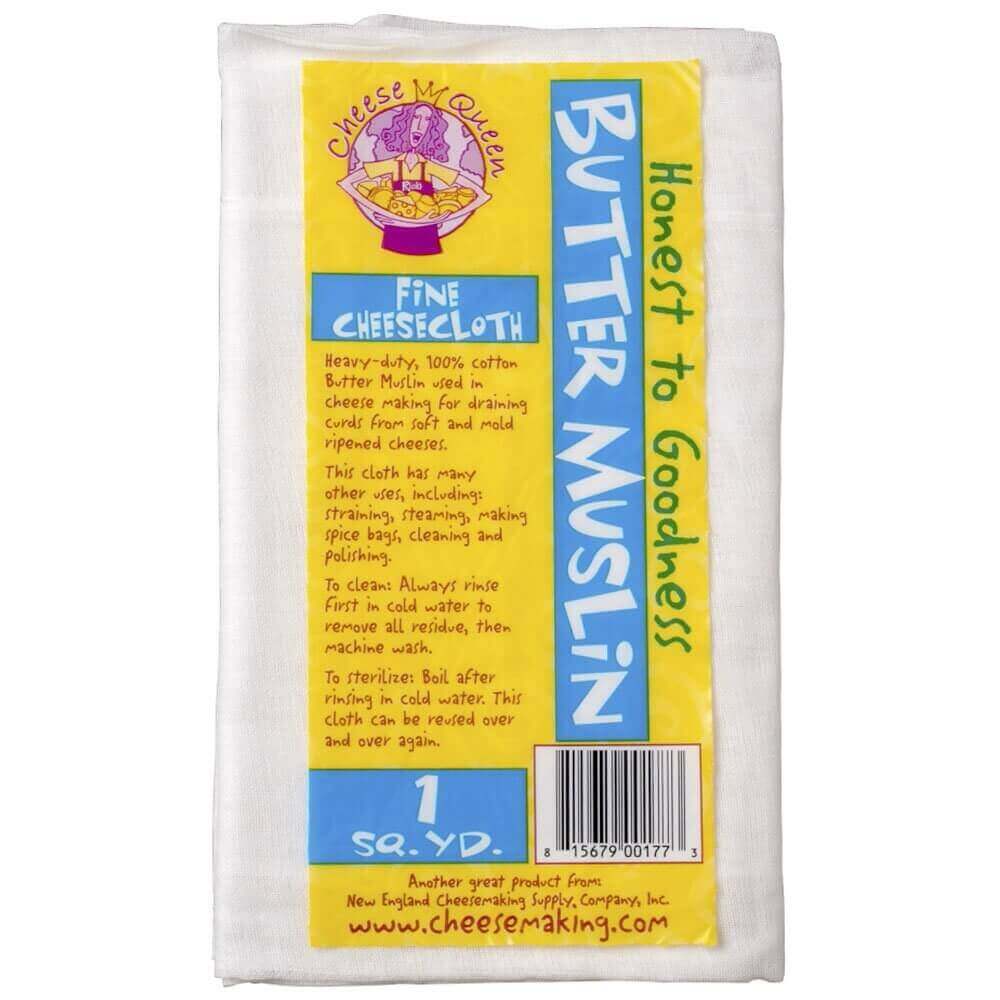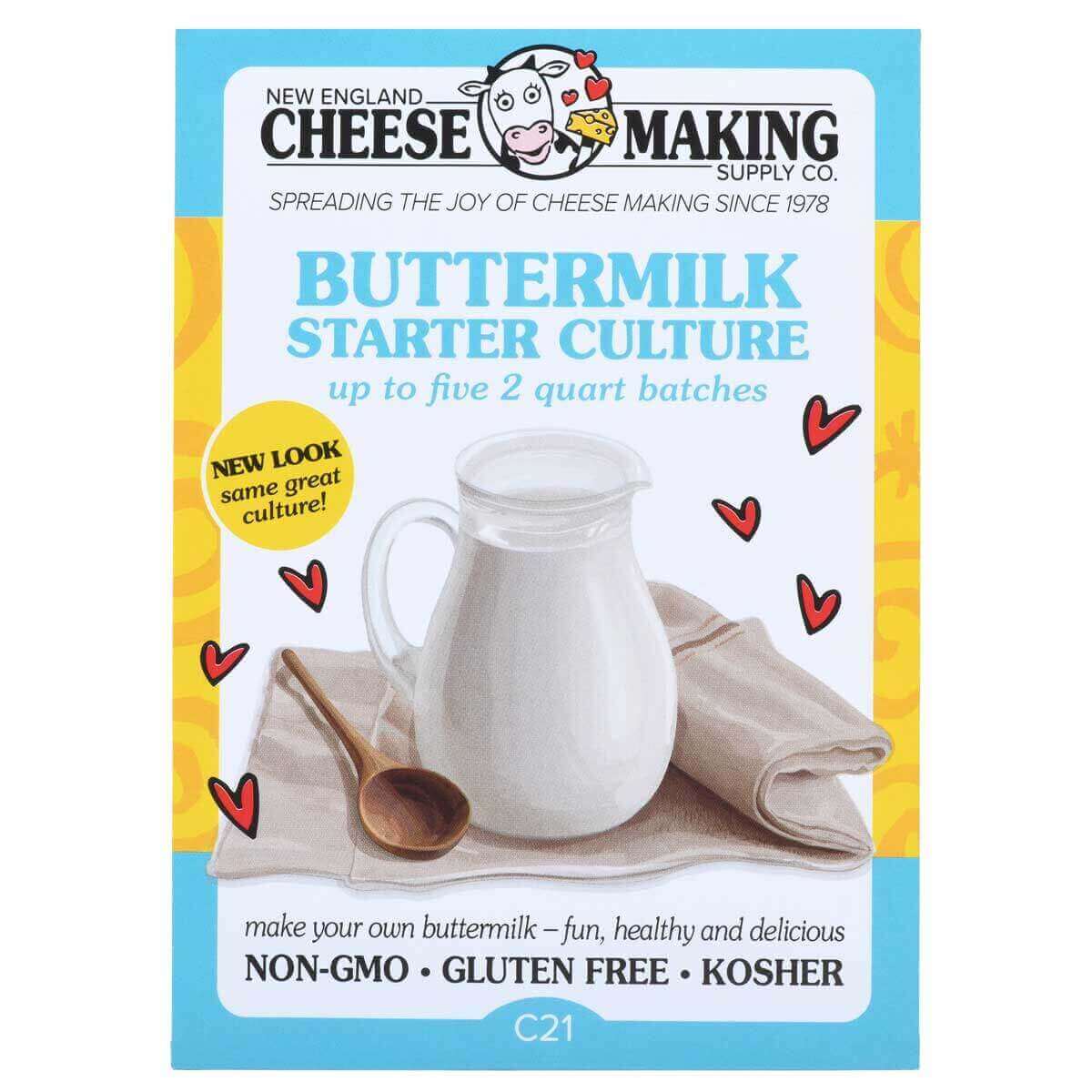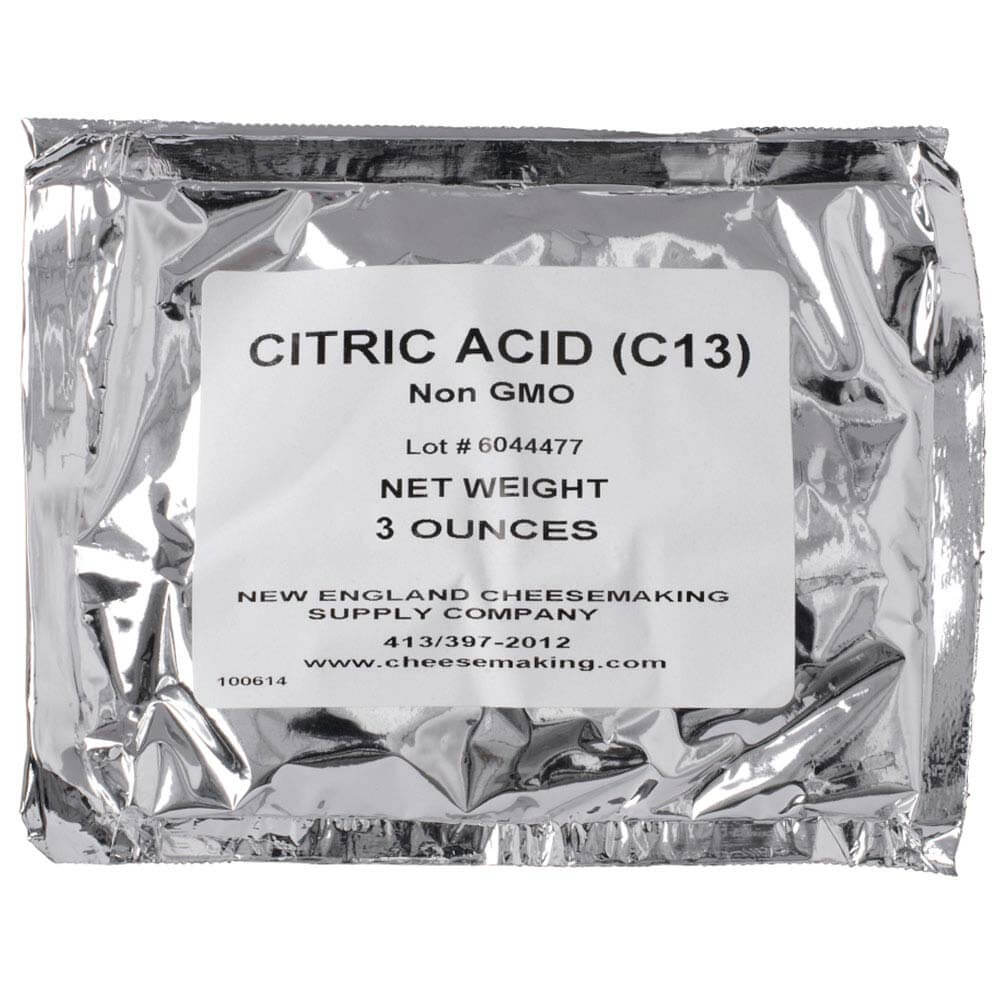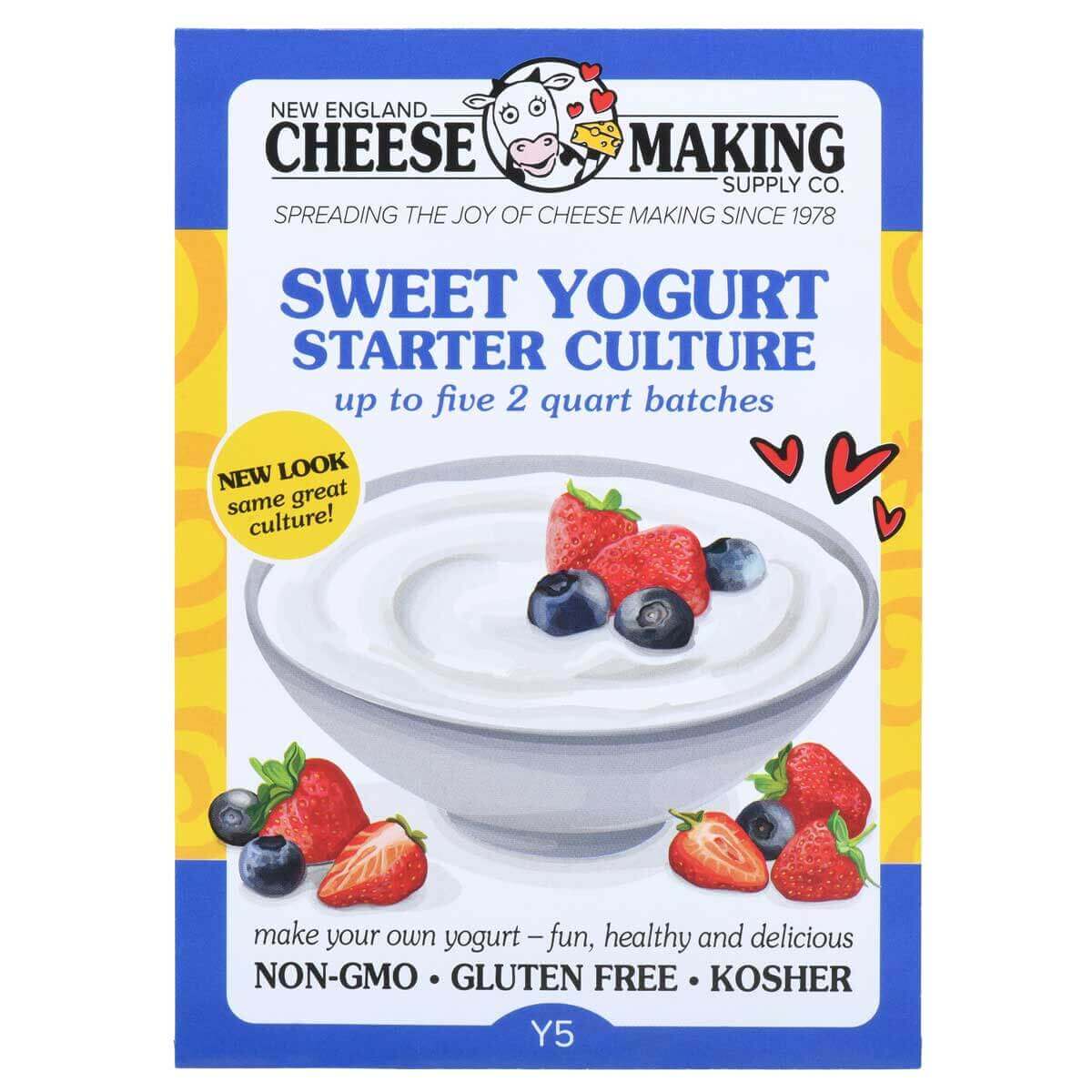Cheese Making Recipe of the Month
A Very Simple Goat's Milk Tomme
Have you been making fresh goat's milk cheese and loving it? If so, here's an opportunity to transform some of that beautiful goat's milk into an aged cheese. (You know you've been wanting to...)
The beauty of this month's recipe is that Jim details every step, including the one where you leave your cheese in your "cave" for 60-90 days as it develops a beautiful, natural rind. Oh, and by the whey, if you make it now, you'll have the perfect gift for the holiday season!
Cheese Making Questions & Answers
Holding heat while draining?
Q. How do you keep your cheese at 78F while it's draining in the molds?
A. We get creative - Normally, a cheese room has plenty of heat with a big vat going, a lot of hot water, and many warm cheeses. For the small scale cheese maker, an incubator needs to be improvised. We do this with pans of hot water clustered around the cheese and an insulated cover on the container.
Lipase in cheddar?
Q. Do you think that adding lipase to cheddar for an extra sharp cheese will work? Is it even advisable?
A. Not advisable - We do not like the character that lipase delivers in a cheddar. The cheese has some lipase that comes in the milk naturally, but adding it would change the flavor in a bad way - it would taste more like a strong Italian cheese.
Wax slipping off?
Q. I have encountered a problem I have never seen before while waxing cheese - the initial coat more or less slipped off. Two things worth mentioning here: I may not have given the cheese quite enough time to chill, though I have never seen this happen as a result. Also, the day before waxing, as it was developing it's natural rind, some mold developed on it, and along with it came a sort of oily substance which encompassed the cheese. That is what I think caused the slip.
A. Several possible reasons - This could be the fat if held at a higher temperature, but it could also be whey from a late fermentation, due to not removing enough moisture or producing enough acid before draining and molding the curds. Wax will not stick to a surface like this.
Cheese turning white?
Q. Our smoked cheddar has been turning white. We smoke it naturally with hickory wood. Sometimes this happens to our smoked Gouda. Any idea why?
A. Changes in temperature - Most likely this is calcium lactate crystals forming at the surface. This is sometimes associated with changing temperatures during aging. In your case, the temperature changes during smoking may be the cause.
Several other causes, such as low pH, can also cause this due to decreased water binding at lower pH and moisture leaching the calcium lactate and forming on the surface.
Have a cheese making question, we're here for you: info@cheesemaking.com
Meet a Fellow Cheese Maker
Brian Wort in Brandywine, Maryland
We met Brian when he came by our trade table at the American Cheese Society Conference in Providence, Rhode Island last month. He wanted to thank Ricki for giving him his start with her book, Home Cheese Making.
Later, at the awards ceremony, we saw Brian accept the second place ribbon in the American Originals Dry Jack category. Brian had moved on from making cheese at home to being the farm manager and cheese maker for the P.A. Bowen Farmstead owned by Sally Fallon Morell and her husband, Geoffrey. (Sally wrote the cookbook, Nourishing Traditions. She and Brian make the cheese they sell, including their award winning Aquasco Jack.)
This spotlight section is a whey to honor cheese makers. Please share your stories and help spread the love of cheese making - moosletter@cheesemaking.com
Fun With the Cheese Queen
It's a wrap!
Another American Cheese Society Conference has come and gone, but the good news is that we took pictures!
Ricki always has a fabulous time, but this year she was particularly happy because of the negative results of her biopsy. One of the participants of the conference brought her handmade quilt square with her to Providence and gave it to Ricki in person (with a big hug).
Great responses!
In our last issue, we asked - "Why is the top of the Pouligney St. Pierre pyramid flat?" and we loved your answers:
Gladney Cooper, Atlanta Georgia: It was just a little taste!
Judy Murdock, Belton, South Carolina: You heard about the lady who taught her daughter to bake a roast? She carefully cut 3 inches off one end then placed it in the roasting pan. Her daughter asked her why. "Because my mom did it that way." Next time she visited her mom, she asked her why she always cut 3 inches off the roast. "Because my roasting pan was always too small!" Maybe the cheese creators had some physical constraint that "shaped" their decision about the cheese?
Lori Terwilliger, Eagan, Minnesota: Although I was told all three reasons you listed for the shape, and they do make for interesting discussion- I wager the reason for the flattened top is much more practical in nature. For a start, just making the mold with an exact pointed top would be a feat for any carpenter to pull off. However, I imagine it is because a mold with a pointed top would be pretty near impossible to sit stable on a flat surface while it was filled with curds, and during the draining process. Not nearly as romantic as the other explanations, I know. But you can only have the fun of eating and sharing if you take care to be serious in the making.
I actually had the pleasure of eating this, and many, many other wonderful cheeses during the four years I lived in Belgium. Which probably explains why our youngest son was born there. A little wine, a bit of cheese, a little romance - well, I'm sure you get the gist.
Robert Russell, Middletown, Rhode Island: Since the steeple of Notre-Dame in Pouligny comes to a point like almost every other French church steeple, that is out as an explanation. The Napoleon sword fighting story has the requisite romantic drama, but strikes me as too pat. My vote is for something way more mundane: tradition. And the shape of the Pouligny-Saint-Pierre is different from Valencay because of local tradition. Not very exciting, but that's where my money is.
Rob Langevoort, Niskayuna, New York: "Plausible" ... the optimum key word to my first thoughts when posed the question of how this traditional French cheese got it's shape ...
It's an upside-down grain funnel. Allow me to explain ...
On your average 18th century European dairy farm you probably had only 2 choices of animals that produce milk - cows and/or goats. These animals needed to be fed and pastured (not to forget barn clean-up) daily. In general, farmers find and create ways to make their work easier and faster (as if they didn't have enough to do already). Funneling feed from an upper floor of a barn to grain troughs below is a quick way to go directly from storage to trough. Size, number, etc. of square wooden funnels would be as individual as each farm. (In my experience, farmers have always used the premise "invention is the product of necessity.")
Now here is where you use some imagination ...
On any given day, the dairy farmer's wife is busy in her kitchen practicing her craft of "milk alchemy" when she finds herself with a batch of curds without a single vessel to put it in. She screams to her husband who comes running in ... sees the problem ... runs back out to the barn and grabs the first thing he finds that will not only hold the curd but allow for drainage and brings it back to his wife. Chalk one up for the farmer for solving today's barnyard conundrum with hopes he will be well rewarded.
After the calamity is over and time has passed, allowing the curd to thicken and dry into cheese, the only way to remove it from it's mold is to tip it over - releasing the cheese which is now in the shape of a pyramid without a point. (This is where "plausible" comes into play.) The farmer gets his funnel back and his wife gets a most delightful goat "fromage" with an odd shape which it will traditionally retain for years to come due to it's original creation because after all, it would not be Pouligny St. Pierre if it were not a pyramid.
In the words of the late, but not forgotten, Paul Harvey - "... and now you know The Rest of the Story ... Good-day!"
Please send your cheese making news & photos to: moosletter@cheesemaking.com
Cheese Making 1,2 & 3
Learn all about the ingredients, equipment and process for making cheese at home. This beginner's guide will walk you through the process from start to finish.
Beginner FAQ's
Got a question? We've got an answer. From milk and cream to rennet and aging, our FAQ section is filled with answers to all your home cheese making questions.
















